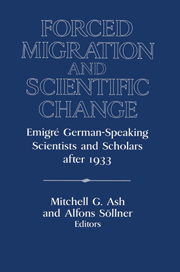Epilogue: The Refugee Scholar in America: The Case of Paul Tillich
Published online by Cambridge University Press: 05 January 2013
Summary
In 1953, Franz L. Neumann, a veteran of the OSS and the author of a well acclaimed study of National Socialism, surveyed the lives of other refugees who, like himself, had fled Hitler for the United States. Tenured at Columbia, Neumann identified three categories among his colleagues in exile, distinguished refugees, aptly labeled by Laura Fermi “illustrious immigrants.” In the first category, Neumann placed those individuals who clung desperately to their pasts, refusing to enter the New World. In the second category, he placed those who bid adieu to their old ways of thinking and embraced, often without a backward glance, the culture of their new home. In the third category, the “most rewarding” and “most difficult,” Neumann placed those individuals who wove together strands of the “new experience” with those of the “old tradition.”
Neumann's viewpoint, that of an émigré who had succeeded admirably within the academic establishment, lent credence to his analysis. In the nearly forty years since he penned his essay “The Social Sciences,” little if any revision has been visited upon his delineations. Instead, students of the migration - led by H. Stuart Hughes and Lewis Coser - have welcomed his categories as a means of understanding the lives and works not only of refugee social scientists but of the intellectual migration in general.
- Type
- Chapter
- Information
- Forced Migration and Scientific ChangeEmigré German-Speaking Scientists and Scholars after 1933, pp. 273 - 290Publisher: Cambridge University PressPrint publication year: 1996
- 1
- Cited by

